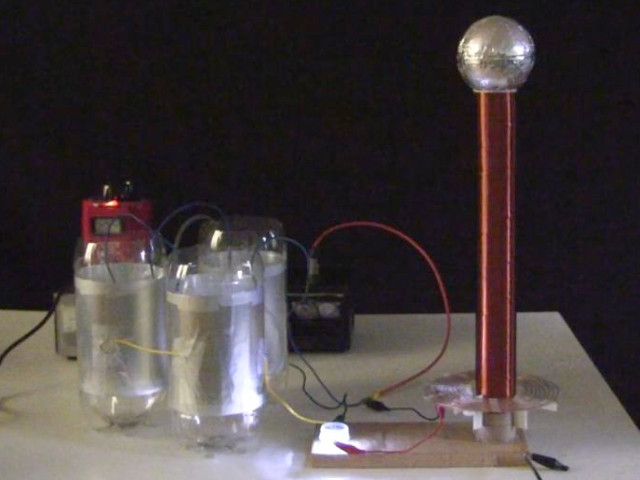Small Spark Gap Tesla Coil
For a long time I'd been asked to make a Tesla coil and show how to make it, and so I made the one below. It's a small one so that more people will have a chance of making one and it's a spark gap type of Tesla coil since that's also the easiest type to make. This one is designed and tuned to be resonant.
Lower down this page are a few videos of it in action and on how to make it. Notice that I made a few variations, some of which you can see in the two photos below and which are detailed further down, including a spiral primary coil and DIY/homemade capacitors.
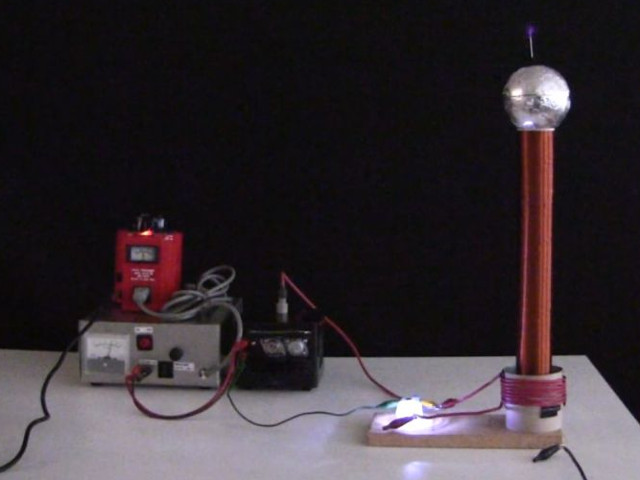
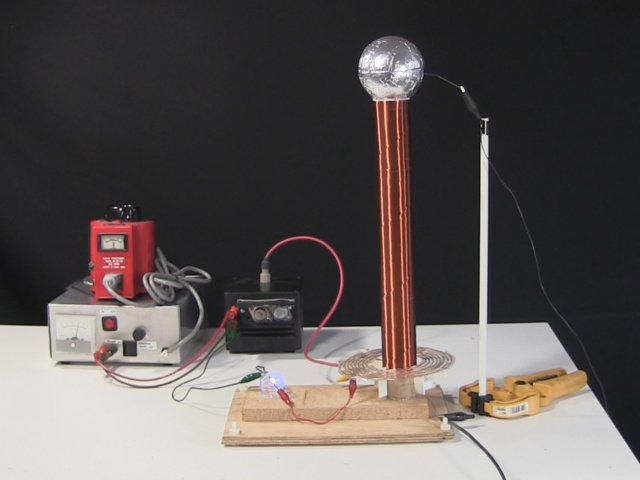
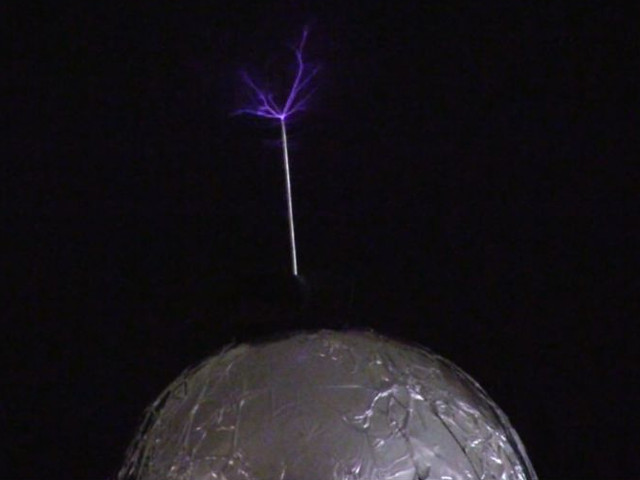
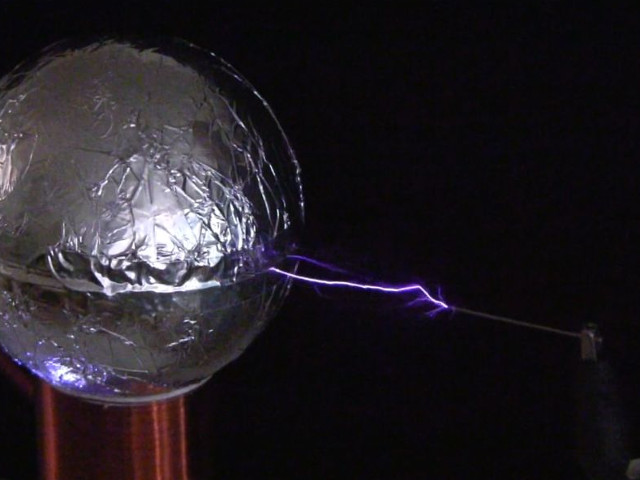
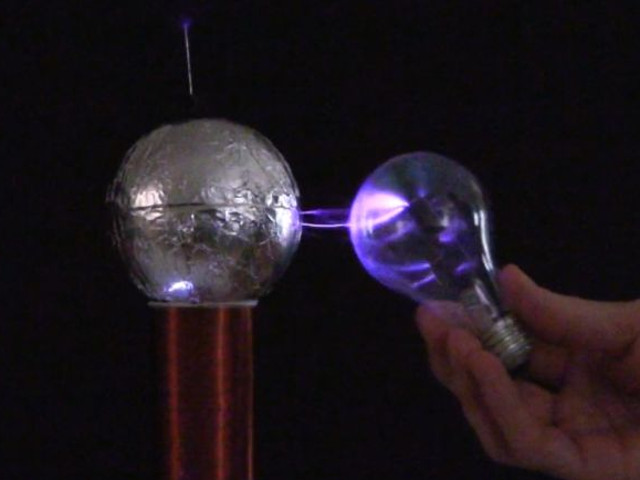
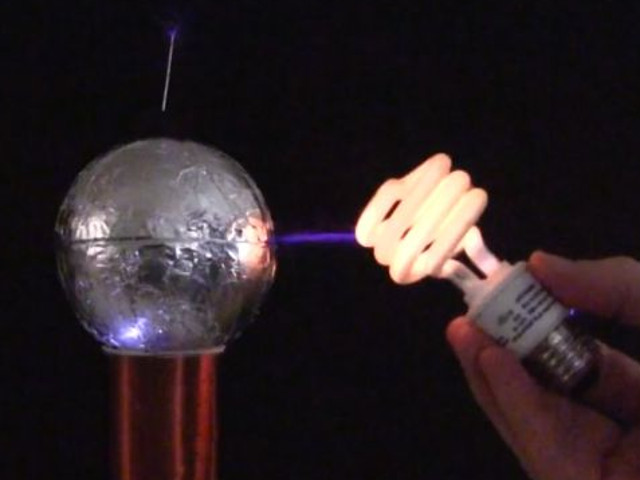
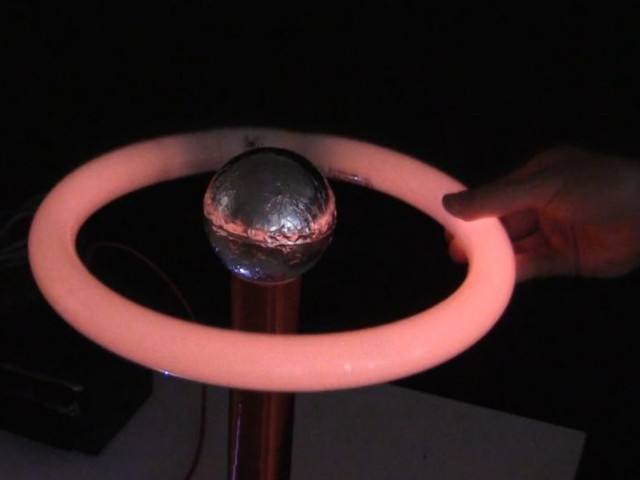
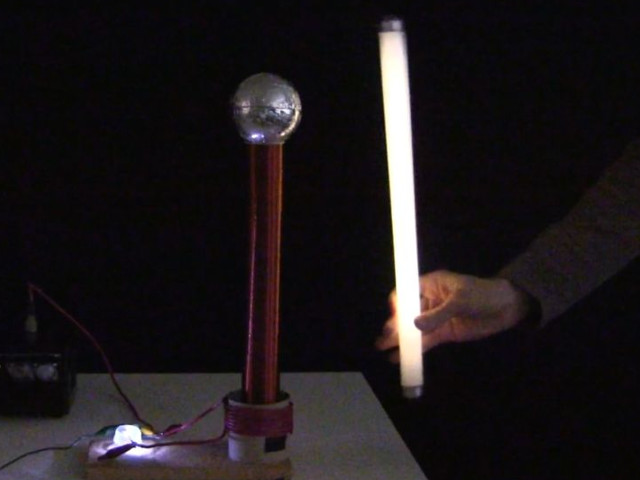
This Tesla coil consists of two circuits, a primary circuit and a secondary circuit (see photos below.) The primary circuit has 4nF of 20kV capacitors, a spark gap made from two nail heads, and a coil of 7 turns of insulated 12AWG wire. The secondary circuit has around 750 turns of enamel insulated 26AWG wire (aka magnet wire) and a aluminum foil covered ball on top called a topload.
It was designed using the popular JavaTC calculator and tuned so that the primary circuit is at the same resonant frequency as the secondary circuit.
The power supply that feeds it puts out high voltage DC and is my homemade one I call the Cube that has a two transistor flyback transformer circuit and built in diode.
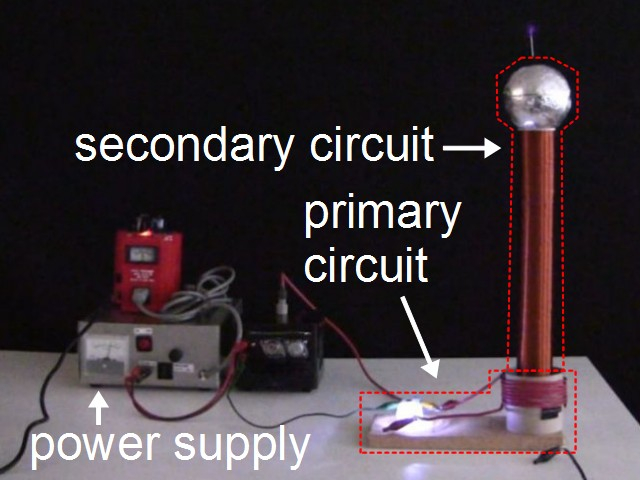
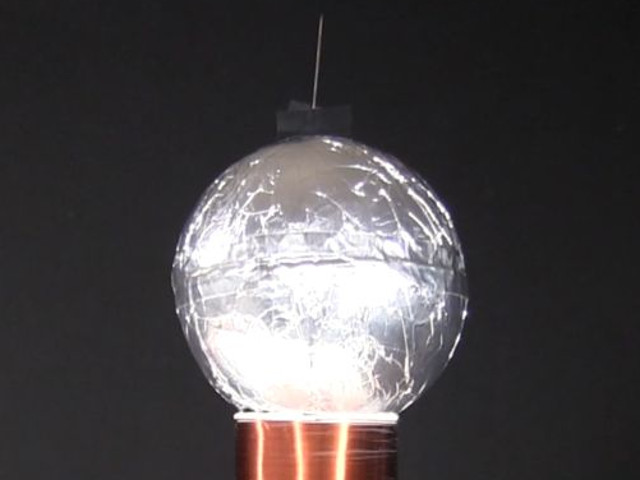
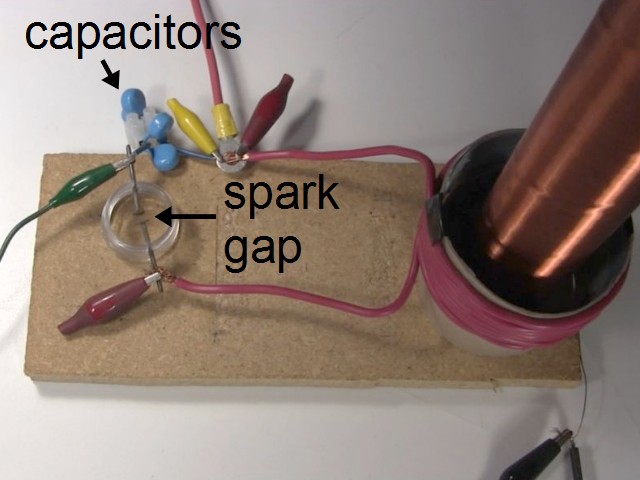
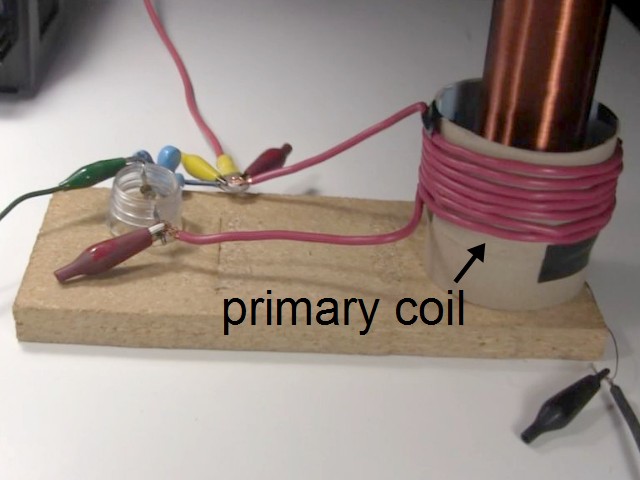
Video - Small Spark Gap Tesla Coil
This video gives an overview of the above small spark gap Tesla coil and then shows some awesome looking demonstrations.
How to Make Tesla Coil - Small Spark Gap Tesla Coil
This video shows step-by-step how to design, make and tune this small spark gap Tesla coil. There's also a schematic below to help further.
A frequently asked question is what voltage should the high voltage power source be capable of? That's difficult to say since the voltage is really limited by the size of the spark gap and the geometry of the electrodes used on either side of the spark gap. Very roughly, I'd estimate that the voltage was around 12kV. In my case I used my Cube power supply which is capable of 20kV and relatively high current. The high current is needed in order to be able to produce sparks at a fairly high frequency. For example, I first tried with a power supply taken from an electric fly swatter. It was able to produce enough voltage to create sparks but only once every second or so.

Note that the schematic mentions a DC high voltage power source. This is because I haven't tested with an AC one. For AC, a choke is usually added on one of the lines coming out of the power source.
Primary coils
This Tesla coil was made such that it is easy to try different primary coils in addition to the one in the photos above, as shown here.
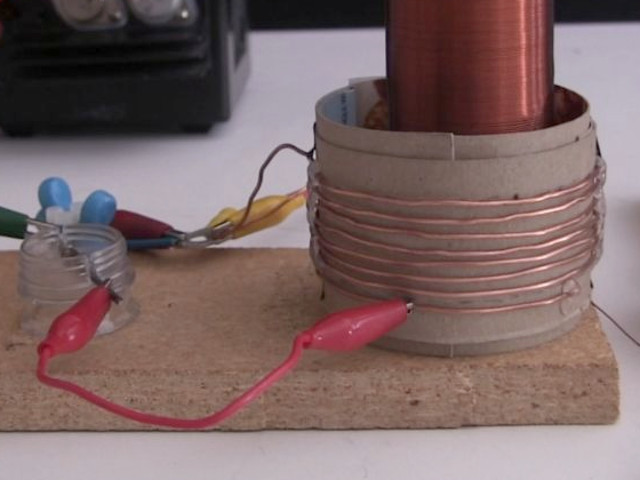
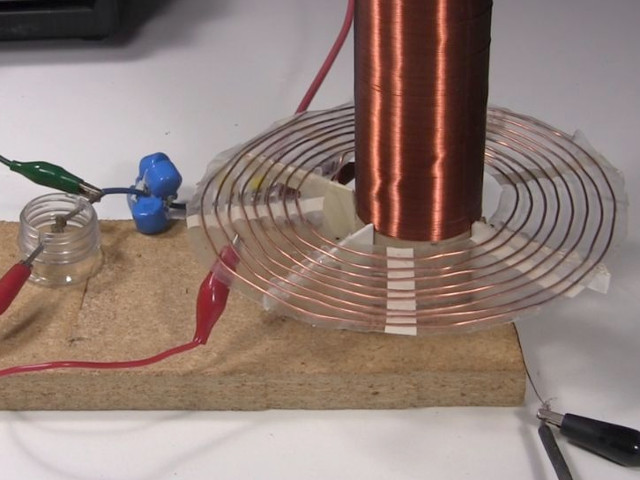
DIY/homemade Tesla coil capacitors
The first few versions of the above Tesla coil used commercially made capacitors but I wanted to show how to make homemade ones instead. I first made some using 3 soda bottles but they took a lot of storage space. So then I made a flat plate capacitor using transparencies from a photocopying store which you can see below looking like a horizontal board at the base of the Tesla coil.
